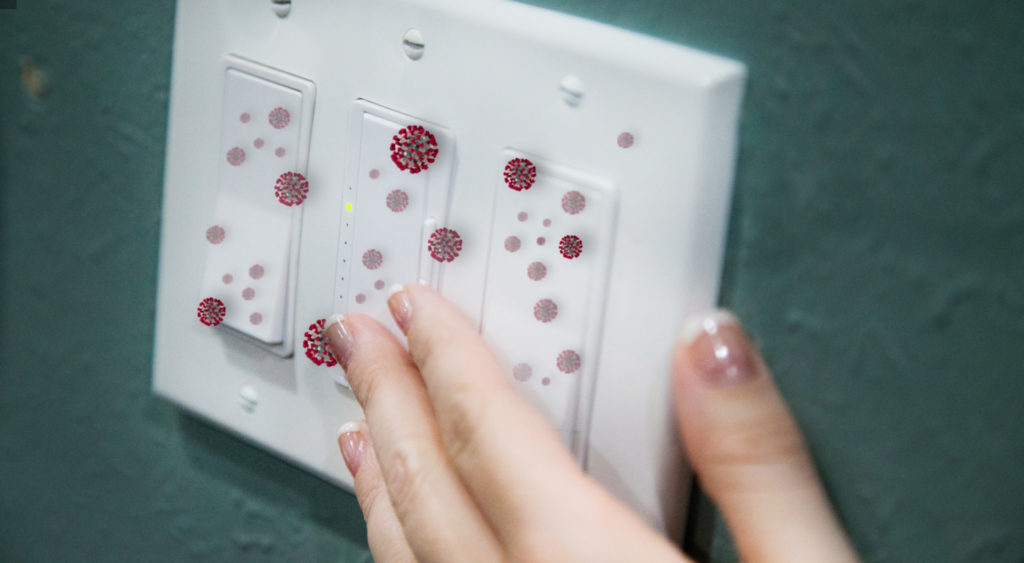Preventive measures in households are important to limit the survival of the virus
Cleaning and disinfecting are paramount to preventing COVID-19 contamination from spreading into and throughout one’s household. Texas A&M AgriLife Research – Institute for Infectious Animal Diseases, IIAD, experts offer guidelines for keeping safe.

This information was compiled by Sarah Caffey, program manager; Jessica Cargill, assistant director;Heather Simmons, DVM, associate director; and Melissa Berquist, Ph.D., director, all in College Station.
All the guidelines were gathered from the CDC Recommendations for Cleaning and Disinfection.
General guidelines for cleaning and disinfection in household settings
- Cleaning: The process of removing dirt and germs from a surface or item.
- This process alone does not kill germs.
- Removing as many germs as possible lowers their risk of spreading.
- Disinfecting: The process of using chemicals to kill germs on surfaces.
- Does not necessarily clean dirty surfaces.
- Killing germs by disinfecting after cleaning lowers the risk of germs spreading.
For households without suspected or confirmed illness
Practice the following preventive actions:
- Clean the most frequently touched surfaces and objects in your household daily (e.g., mobile phones, tables, countertops, faucets, switches, doorknobs, etc.) using water and a regular household cleanser.
- Before applying a disinfectant, all dirty surfaces should first be cleaned using water and a regular household cleanser.
- Be sure to follow the manufacturer’s instructions for all cleaning and disinfecting products.
Recommendations for cleaning and disinfecting households with residents in self-isolation, either suspected or confirmed to have COVID-19
General Guidelines:
- Clean and disinfect frequently touched surfaces and objects daily – especially those in common areas such as mobile phones, remotes, tables, chairs, doorknobs, switches, handles, desks, toilets and sinks.
- If possible, designate a dedicated bedroom and bathroom for the ill person and only clean and disinfect those areas as needed to minimize contact.
- Further minimize contact by providing a set of personal cleaning supplies including tissues, paper towels, cleaners and disinfectants for the ill person to use in their designated space, unless the ill person is a child unable to handle the supplies.
- If the ill person is sharing a bathroom with others in the household, that space should be cleaned and disinfected each time after an ill person uses it.
How to clean and disinfect:
Surfaces
- Wear disposable gloves.
- Discard gloves after each use.
- Clean hands immediately after removing gloves.
- Use a detergent or soap and water to clean prior to disinfection.
- For disinfection, diluted household bleach solutions, alcohol solutions with at least 70% alcohol, or most common EPA-registered household disinfectants should be effective.
- Two options for creating your own bleach solution: Mix 5 tablespoons or 1/3 cup of bleach per gallon of water; or mix 4 teaspoons of bleach per quart of water.
- For soft and porous surfaces such as carpet, drapes and rugs, first remove any visible dirt and then clean with products designated for use on these surfaces.
Laundry items
- Wear disposable gloves when handling dirty laundry from a sick person and discard the gloves after use.
- If you do not have gloves to use, wash your hands immediately after handling dirty laundry.
- Do not shake dirty laundry – this could spread virus particles through the air.
- Wash items using the warmest appropriate water setting and dry them completely.
- It is okay to wash dirty laundry from a sick person with items from other people.
- Clean and disinfect hampers according to guidance for surfaces or place a liner in the hamper that can either be laundered or thrown out after each use.